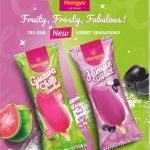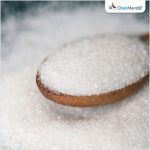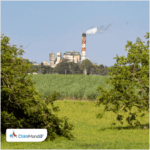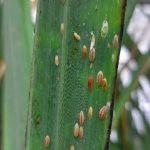Raw Sugar
In tropical regions where sugar cane is grown, sugar cane is partially refined into raw sugar at mills operated near the sugar fields. At the mills, the sugar cane is first cut up into small pieces, and then crushed to extract its juice. The juice is clarified by removing most of the impurities (plant fibre and soil, for example). This sugar-rich solution is boiled down to a thick syrup to which tiny “seed” sugar crystals are added and allowed to grow to larger crystals of raw sugar. Centrifugals (similar to a washing machine when it reaches the spin cycle) are then used to separate the raw sugar crystals from the syrup (molasses). The remaining raw sugar crystals are refined in a local refinery or more often shipped in bulk by sea, to refinery warehouses across the world. In Canada, for example, the major refineries are located in Toronto, Vancouver, and Montreal.
Shipping Raw Sugar
Raw sugar, transported by boat, is covered with a thin coat of molasses, residual plant matter, and particles from shipping and handling. It must undergo purification at a cane sugar refinery before it is ready for human consumption.
At the Sugar Refinery
The first step is to remove the thin coat of molasses and residual matter from the raw sugar crystals. This is accomplished by blending the raw sugar in a hot syrup and then spinning off the dark brown syrup (molasses) from the sugar in high speed centrifugals. The washed crystals are then dissolved in water and filtered through a mechanical ‘strainer’ to remove larger particles, and clarified to remove the remaining suspended solids and colour. The result is a pure, colourless syrup consisting of sugar and water.
The sugar syrup is concentrated through evaporation (boiling under vacuum) and again tiny “seed” crystals are added allowing larger sugar crystals to form. Granulated sugar is obtained by extracting these crystals from the syrup by spinning in centrifugals (like a washing machine).
The crystals are washed with water, dried in a drum (much like a laundry dryer) and stored in silos. Prior to packaging, the sugar is sieved through wire mesh with various sizes of holes to separate crystals that correspond to different varieties of sugar (e.g., fine, superfine, powdered).
Cane Sugar Refining By
Products – Much of the water removed through cane sugar refining and sugar beet processing still contains sugar, so it is pumped back into the system to be used again. Molasses is recycled through the sugar beet and cane sugar refining process an average of four times to remove the maximum amount of sugar. Molasses is also used by distillers, bakers and pharmaceutical companies.







